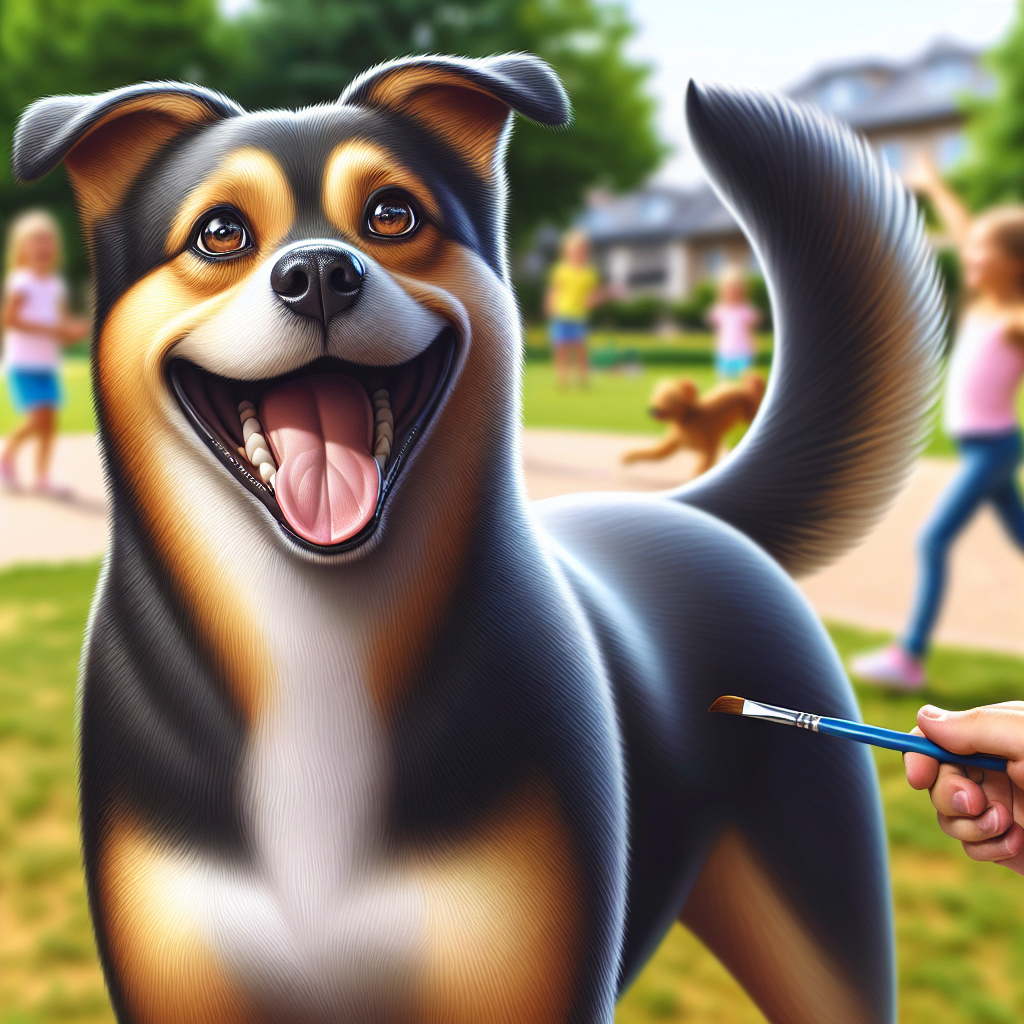Introduction to the Flea Fiasco

So, you think you’re living in a peaceful home with your pet, huh? But then—wham! Fleas crash your party like uninvited guests. They’re the tiny vampires of the insect world, feasting on your furry friend and leaving chaos in their wake. I’ve been in the pet biz for over 20 years, and let me tell you, fleas are the ultimate freeloaders. The best way to get rid of fleas? It’s a blend of strategy, elbow grease, and maybe a touch of desperation.
You might be chilling on the couch when you spot your pet scratching like it’s an Olympic sport. This ain’t just an itch—it’s a sign. Flea infestation signs can sneak up on you faster than a cat’s meow. But don’t panic. Let’s dive into the nitty-gritty of how to spot fleas on pets before they turn your home into their personal playground.
Spotting the Sneaky Culprits
First things first, you gotta know what you’re looking for. Fleas are tiny—like, blink-and-you-miss-them tiny. They love to hide in your pet’s fur, turning them into a mobile flea hotel. Look for dark specks—flea dirt, they call it—on your pet’s skin. It’s flea poop, folks, and it tells you all you need to know.
How to spot fleas on pets? Grab a flea comb and go on a treasure hunt. Start combing through their fur, especially around the neck and tail. If you see little critters hopping around like they’ve got somewhere to be, congrats, you’ve found the culprits. Flea infestation signs are sneaky, but once you know what to look for, you’re halfway to beating these pesky squatters.
The Flashlight Trick
Okay, this one’s a bit of a hack. You don’t need fancy gadgets—just a flashlight and some patience. When your pet’s chilling on the floor, shine the light at an angle. Fleas hate the spotlight—literally. You’ll see them dart across your pet’s fur like they’re late for a meeting. It’s like a tiny, gross version of a Broadway show.
This trick works wonders for spotting these sneaky monsters. It’s simple, low-tech, and a bit of an eye-opener. Once you’ve tracked them down, it’s time to send them packing. The best way to get rid of fleas? Start by knowing your enemy. With a flashlight in hand, you’re not just a pet owner—you’re a flea detective.
Dive into the Bath – Flea Edition
Now, I’m not saying throw your pet in the tub like you’re dealing with a toddler in a mud puddle. Be gentle. It’s bath time, but not the spa kind. We’re talking about a flea eviction notice. Bathing pets to remove fleas is a tried-and-true method. The trick? Soapy water flea trap.
Fill up the tub, add some pet-friendly soap, and get ready to roll up your sleeves. Fleas hate soap—something about it messes with their evil plans. As you lather up your pet, those little pests will start making a run for it. It’s oddly satisfying, watching them go down the drain. Your pet might hate you for a hot minute, but it’s for the greater good.
The Daily Vacuum Dance
Ah, the vacuum—a pet owner’s best friend. It’s not just about sucking up crumbs and pet hair. Vacuuming to remove flea eggs is where the real magic happens. Fleas lay eggs like there’s no tomorrow, and those suckers end up all over your house.
Do the daily vacuum dance, and don’t skip the corners. Flea eggs love to hide in carpets and upholstery. Think of your vacuum as a tiny tornado, sweeping away the flea babies before they can wreak havoc. It’s not glamorous, but neither is a flea infestation. The best way to get rid of fleas involves more than just treating your pet—it’s about taking back your home, one vacuum session at a time.
—
So there you have it, my flea-fighting compadres. It’s not a walk in the park, but with a little know-how and a lot of determination, you can reclaim your space. Remember, you’re not alone in this. Every pet owner has faced the flea fiasco at some point. So grab your flashlight, fill up that tub, and start vacuuming like there’s no tomorrow. Your pet—and your sanity—will thank you.
Thanks for sticking with me through this flea-ridden journey. Go forth and conquer those pests, and may your days be itch-free!
Tackling Fleas in Your Home
Alright, folks, let’s dive into the mess that is dealing with fleas in your humble abode. You know, those pesky little jumpers that somehow make your home their playground. We’re gonna arm you with some tried and true methods to reclaim your territory. Flea infestation home treatment ain’t for the faint-hearted, but someone’s gotta do it. First, you gotta vacuum—like it’s your new hobby. Carpets, floors, furniture, even that old rug you keep in the attic. Yes, it’s mundane, but trust me, it’s effective in how to eliminate fleas from home.
Next, wash everything. I mean everything. Bedding, pet toys, your clothes—anything that can fit into a washing machine should take a spin. Use hot water, because fleas hate it. Now, sprinkle some diatomaceous earth on your carpets. It’s like fairy dust but for fleas—only it’s deadly to them. Leave it on for a day or two, then vacuum again. Repeat this dance a couple of times a week until you’re sure those little suckers are gone.
The Role of Flea Collars
Now, onto our unsung heroes—flea collars. They might not be the shiny capes and tights type, but they can sure save the day. These nifty little accessories are more than just a fashion statement for your furry companion. When it comes to the best flea collars for dogs, you want something that’s not gonna break the bank but also does the job. Seresto and Hartz are names you’ll hear floating around. They’re like the bouncers at a nightclub, keeping the riff-raff out.
The collars release chemicals that either repel or kill fleas. Trust me, it’s better than letting your dog become an all-you-can-eat buffet for fleas. Plus, they last a good while—around 8 months, give or take. Just remember to check the fit. Too tight, and your dog’s uncomfortable. Too loose, and the fleas laugh at you.
Natural Remedies: A Closer Look
If you’re the kind who prefers to keep it au naturel, then natural flea removal remedies might be your jam. You’re not alone. Many folks feel uneasy about chemicals, and hey, I get it. Using natural oils for fleas is like bringing a little bit of Mother Nature into the battle. Essential oils like cedarwood, rosemary, and peppermint are your friends here.
Make a spray by mixing these oils with water. A few spritzes on your dog’s coat, and you’ve got a natural deterrent. Lemons and vinegar also work wonders. Rub a slice of lemon on your pet’s fur or add a bit of vinegar to their bath. It’s not like you’re making a salad, but it keeps the fleas at bay. These remedies aren’t just for your pets. Use them around the house. It’s like hosting a flea eviction party—no chemicals invited.
Understanding Flea Lifecycles
Oh, and did you ever wonder about the secret life of a flea? There’s more than meets the eye, folks. These little critters have lifecycles that make a soap opera look tame. Understanding flea lifecycle stages can be your ticket to getting rid of them for good.
Fleas go through four stages: egg, larva, pupa, and adult. It’s like the world’s worst metamorphosis. Eggs are laid in batches—about 20 at a time. They fall off your pet and end up scattered around your house. Then they hatch into larvae. These little wigglers avoid light and burrow into carpets and cracks. Fun, right? Next, they cocoon themselves as pupae. This stage can last for weeks or months. Finally, they emerge as adults, ready to bite. Knowledge is power, and knowing their lifecycle means you can target them at every stage. It’s like having insider info on a heist—only you’re the good guy.
The Importance of Regular Vet Visits
And speaking of tickets, don’t skip those vet visits. Regular checkups might feel like a chore, but trust me, they can nip a flea problem in the bud before it becomes a full-blown crisis. Vets are like the detectives in this flea-ridden drama, always a step ahead. Regular vet checkups for flea prevention can save you a world of trouble. They’ll spot flea allergies, recommend treatments, and keep your pet healthy.
I know, it’s not always fun—waiting rooms, the smell of antiseptic, and the inevitable bill. But in the grand scheme of things, it’s worth it. A vet visit might cost you a bit upfront, but think of the cash you’re saving by avoiding a flea infestation. Plus, your pet deserves it. They’re family, after all.
So, roll up your sleeves, get ready to take action, and remember—you’re not alone in this fight. You’ve got the tools, the knowledge, and a little bit of grit. Thanks for sticking with us on this journey. Here’s to a flea-free life—cheers!
Flea Remedies from the Kitchen: Old School Tricks
So, imagine this. You’re sitting in your kitchen, sipping a cup of coffee, when you spot your furry friend scratching away like there’s no tomorrow. Fleas. Every pet owner’s nightmare. But before you dash to the store, let’s take a look at some good ol’ kitchen remedies—those natural flea remedies for pets that Grandma used to swear by.
First up, we’ve got vinegar. Yeah, that bottle sitting in your pantry might just become your new best friend. Mix some with water and spritz it on your pet. Fleas hate the stuff. Then there’s lemon juice—another flea foe. Boil a sliced lemon, let it sit overnight, and then use it as a spray. Some folks even add a dash of rosemary for a bit of extra oomph.
And don’t get me started on diatomaceous earth. Sounds fancy, right? But it’s just a fine powder that dehydrates fleas. Sprinkle it around your house, let it sit, and vacuum it up. Just be careful not to inhale too much. Trust me, it’s not pleasant.
The Flea Collar: Friend or Foe?
Ah, the flea collar. That little strip of magic—or is it? Let’s dive in. On one hand, it’s kind of like a safety net. You put it on, and bam—your pet’s protected. But, is it really that simple? Not always.
While flea collars can be effective flea control, they come with their own set of issues. The flea collar benefits and drawbacks are pretty straightforward. They can protect your pet for months without you lifting a finger. But, some pets have sensitive skin, and collars might irritate them. Plus, if your pet’s a chewer, it could become a tasty snack, which is a big no-no.
So, is it a friend or foe? Depends on your furry buddy. Keep an eye out for any reactions, and if your pet’s not a fan, maybe skip the collar. There’s no one-size-fits-all in the world of pet care.
Grooming Your Pet: A Flea-Free Ritual
Now, let’s talk grooming. Not just a beauty ritual but a flea-free one. Regular grooming is like giving your pet a spa day while also ensuring they’re not hosting any unwanted guests. Home grooming for flea prevention is crucial.
Start with a good brush. A flea comb with fine teeth can help catch those pesky critters. It’s a bit like a treasure hunt, but instead of gold, you’re looking for fleas. Make sure to dip the comb in soapy water to drown any fleas you find. It sounds morbid, but hey, it works.
Bath time is another essential. Use a gentle flea shampoo and lather up. Be thorough but gentle. Your pet will appreciate it. And after the bath, dry them off and give them a treat. They’ve earned it.
Effective Flea Control in the House
Fleas don’t just hang out on your pet. They love your home, too. So, effective flea control in the house is key. It’s all about the vacuum. Vacuum like your life depends on it. Carpets, rugs, upholstery—anything that can harbor fleas. And don’t forget to empty that vacuum bag. You don’t want a flea party in there.
Then there’s the laundry. Wash your pet’s bedding regularly—hot water is your ally here. It’s amazing what a good spin in the washing machine can do.
For an added layer of protection, consider some natural flea deterrents. Essential oils like lavender or eucalyptus can help, but make sure they’re safe for pets. You don’t want to swap one problem for another.
The Vet Visit: When to Call in the Pros
Sometimes, despite your best efforts, those fleas just won’t budge. That’s when it’s time to visit the vet for flea treatment. Vets have a few tricks up their sleeves—prescription treatments that are a bit more hardcore than what you can whip up at home.
But how do you know when it’s time to call the pros? If your pet’s scratching non-stop, losing fur, or if you’re finding fleas everywhere, it’s probably time. Don’t wait too long—your pet’s comfort is worth it.
And don’t be afraid to ask questions. Vets are there to help, and they’ve seen it all. They can guide you on the best way to get rid of fleas, tailored to your pet’s needs.
So, there you have it. A little kitchen magic, some grooming, a touch of housework, and the occasional vet visit can keep those pesky fleas at bay. Remember, every pet’s different, so find what works for you. Thanks for sticking around, and good luck on your flea-fighting journey. Your pet’s counting on you!
Quick Takeaways:
Alright, let’s cut to the chase. Getting rid of fleas isn’t exactly a walk in the park, but it’s doable with some grit and know-how. The best way to get rid of fleas is to tackle them on all fronts—your pet, your home, and your yard if need be. First, learn how to spot fleas on pets by checking for small black specks in their fur or unusual scratching. If your pet’s scratching like there’s no tomorrow, you might be dealing with a flea infestation.
Next, roll up those sleeves and set some traps. A soapy water flea trap can be your evening project—it’s simple and effective. Place a shallow dish of soapy water under a light at night, and watch those fleas head for the light. Bathing pets to remove fleas is another go-to move. Use a gentle pet shampoo and a flea comb to catch those jumpers.
Vacuuming to remove flea eggs is your next step. This ain’t the time for a lazy sweep—get under the couch, hit the corners, and empty that vacuum bag like it’s full of gold. For those who fancy a natural approach, using natural oils for fleas like lavender or cedar can add an earthy touch to your war on fleas.
Finally, don’t ignore regular vet checkups for flea prevention. Your vet can guide you on the best flea collars for dogs or other flea control methods. They’re the pros, after all. Keep at it, and you’ll soon reclaim your home from these uninvited guests.
FAQs:
1.
How do I know if my pet has fleas?
Spotting fleas on your pet can be tricky. Look for flea infestation signs like excessive scratching, biting, or licking. Check for flea dirt—small black specks—in their fur. If you’re still unsure, a flea comb can help you get a closer look. Comb through their fur and see if any fleas jump ship. If you find some, it’s time to take action.
2.
What’s the best way to get rid of fleas in my home?
The best way to get rid of fleas—start with a good clean. Vacuuming to remove flea eggs is essential. Hit every nook and cranny, and don’t forget the furniture. Next, try a soapy water flea trap. It’s a cheap, effective way to catch those pesky jumpers. If you’re leaning towards natural flea removal remedies, consider using natural oils for fleas. Lavender and cedar oils are popular choices. Finally, stay on top of regular home grooming for flea prevention. It’s not glamorous, but it works.
3.
Can fleas be eliminated without using chemicals?
Yes, you can eliminate fleas without chemicals. Start with bathing pets to remove fleas, using a gentle shampoo. Follow up with a flea comb to catch any hangers-on. In your home, vacuuming is your best friend. For a natural twist, try using natural oils for fleas. While it’s not instant magic, patience and persistence pay off.
4.
Are flea collars safe and effective for dogs?
Flea collars can be both safe and effective, but it’s essential to choose the right one. The best flea collars for dogs release active ingredients that repel and kill fleas. However, keep an eye out for any skin irritation or discomfort. If your pup seems bothered, it’s time to consult your vet. They can point you towards the right flea control methods for your furry friend.
5.
When should I visit the vet for flea treatment?
If your flea-fighting efforts aren’t cutting it, it’s time to call in the pros. Visit the vet if your pet’s scratching doesn’t improve, or if they’re losing fur or developing skin issues. A vet can offer stronger treatments and guide you on how to eliminate fleas from home. Regular vet checkups for flea prevention can also help keep future infestations at bay. Don’t wait until it’s a full-blown crisis—catch it early.
Conclusion:
So there you have it, folks—the lowdown on the best way to get rid of fleas. It’s a battle, no doubt, but one you can win with some elbow grease. Start by learning how to spot fleas on pets and keep an eye out for those flea infestation signs. Dive into the nitty-gritty with soapy water flea traps, and don’t skimp on vacuuming to remove flea eggs. Bathing pets to remove fleas and using a flea comb will keep your furry friends happy and healthy.
Remember, a multi-pronged approach is your best shot. Whether you’re going chemical-free or sticking with conventional methods, consistency is key. And don’t forget those regular vet checkups for flea prevention—they’re worth their weight in gold. So take a deep breath, roll up your sleeves, and tackle those fleas head-on. Here’s to you taking back your home and your peace of mind—cheers to a flea-free life! Thanks for hanging in there, and good luck on your journey.
References:
1. https://www.webmd.com/pets/remove-fleas-from-pet
2. https://www.cdc.gov/fleas/prevention/index.html
3. https://www.epa.gov/pets/controlling-fleas-and-ticks-around-your-home
4. https://www.health.harvard.edu/staying-healthy/how-to-get-rid-of-fleas-protecting-your-home-and-pets
5. https://www.petmd.com/general-health/flea-infestation
Our solution eradicates fleas on contact without harmful chemicals, ensuring a safe environment for your pets and family. Easy to use and highly effective, SayByeBugs helps you maintain a flea-free home. Learn more and order today at SayByeBugs.com
Our solution eradicates fleas on contact without harmful chemicals, ensuring a safe environment for your pets and family. Easy to use and highly effective, SayByeBugs helps you maintain a flea-free home. Learn more and order today at SayByeBugs.com








